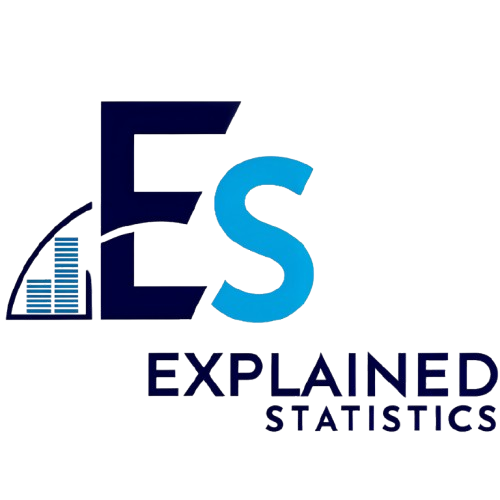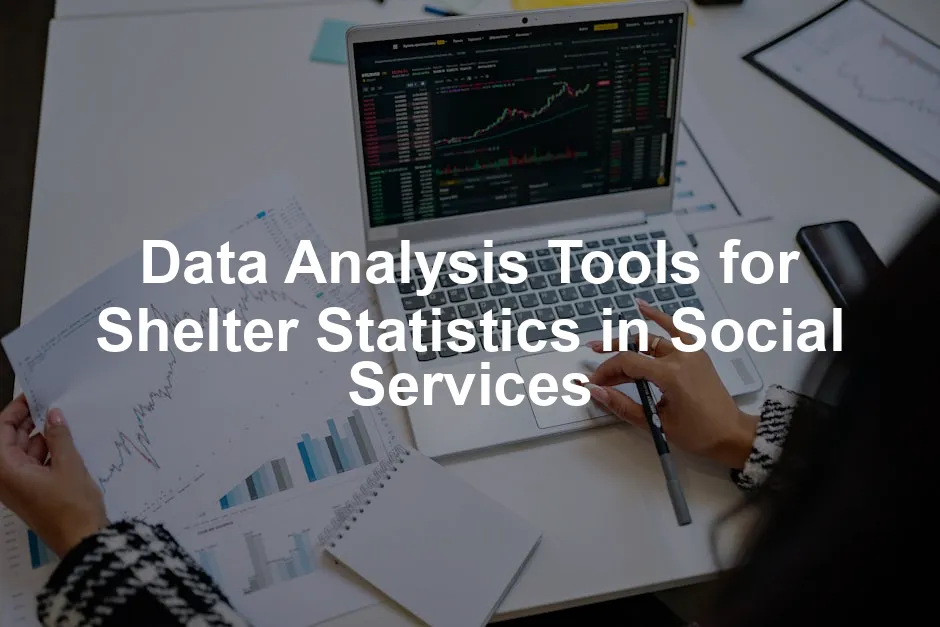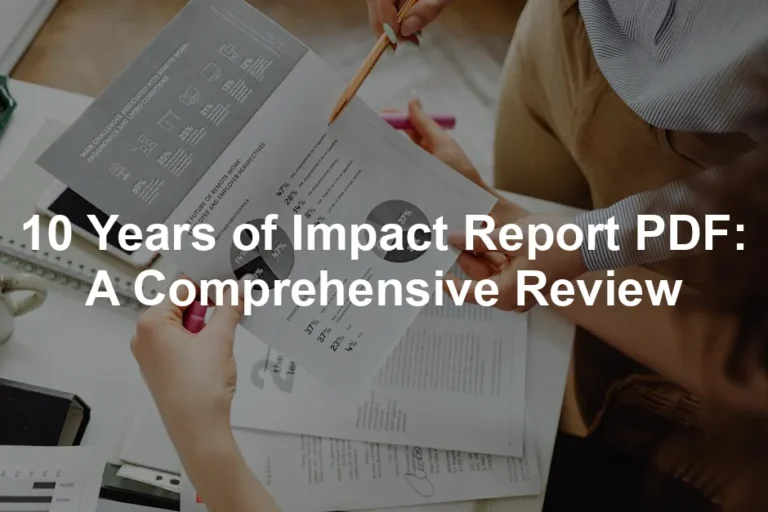Introduction
In the ever-evolving landscape of social services, data is the new gold. For shelters, the ability to harness data analysis tools has become paramount. These tools empower organizations to make informed decisions, enhance operations, and ultimately improve the lives of those they serve. This article explores the importance of data analysis tools specific to shelters, addressing the challenges they face in managing and analyzing vast quantities of information.
Shelters often juggle an overwhelming amount of data—from the number of admissions to the demographics of residents. However, many struggle with inconsistent data collection methods and outdated systems. This can lead to fragmented reports and inaccurate insights, hampering their ability to respond adequately to the needs of their populations.
The bottom line? Effective data analysis tools can significantly enhance decision-making processes in shelters. By implementing robust systems, shelters can track key metrics, uncover trends, and formulate strategies that lead to better outcomes for individuals seeking assistance. Through this article, we will highlight the various data analysis tools available, their relevance in shelter statistics, and how they can revolutionize social services.

Understanding Shelter Statistics
The Importance of Data in Shelters
Shelter statistics encompass a variety of metrics that are crucial for understanding the dynamics within shelter environments. These include the number of admissions, average length of stay, and various outcomes for residents, such as adoption rates or successful reintegrations into society. Demographic information also plays a pivotal role in tailoring services to meet the unique needs of different populations.
Tracking these key metrics is essential for shelters to assess their performance and identify areas for improvement. For instance, understanding the average length of stay can assist in resource allocation, ensuring that beds are available for those in need. Additionally, knowing the demographic breakdown of residents can help shelters design programs that resonate with their specific client base, ultimately fostering a more supportive environment.

Challenges in Data Collection and Analysis
Despite the critical need for accurate data, shelters face several challenges in data collection and analysis. One significant roadblock is data fragmentation. Many shelters use various systems to collect information, leading to inconsistencies and incomplete datasets. A lack of standardization in data collection methods can create barriers, making it difficult to derive actionable insights.
Moreover, resource constraints can hinder effective data management. Shelters often operate on limited budgets and staff, leaving little room for dedicated data analysts or advanced systems. This shortage of resources can result in data being overlooked or poorly maintained, which ultimately impacts the quality of services offered. Addressing these challenges is vital for shelters to fully leverage the potential of data analysis tools, paving the way for improved operations and enhanced outcomes for their populations.
By understanding the importance of shelter statistics and recognizing the obstacles in data collection and analysis, organizations can better appreciate the value of investing in effective data analysis tools. These tools not only streamline operations but also empower shelters to make data-driven decisions that have a meaningful impact on their communities. For more insights on shelter statistics, refer to this comprehensive guide to homeless shelter statistics and exits.
Understanding shelter statistics is essential for improving services and outcomes. Learn more about shelter statistics and exits.

Data Analysis Tools Overview
In the realm of social services, particularly within shelters, data analysis tools are essential for transforming raw data into actionable insights. These tools help organizations track key metrics, improve services, and enhance outcomes for those in need. Let’s explore the types of data analysis tools available, focusing on their functions and benefits.
Types of Data Analysis Tools
1. Statistical Analysis Tools
– SPSS: This heavyweight in statistical analysis plays a crucial role in examining shelter statistics. Known for its user-friendly interface, SPSS allows shelters to conduct complex statistical analyses with ease. Together with R, they enable shelters to uncover trends and make data-driven decisions that improve service delivery.
– R: A favorite among data scientists, R provides extensive libraries for statistical modeling and visualization. If you want to dive deep into data analysis, this programming language can be your best friend. Check out R programming resources here to get started!

– Excel: While it may seem basic, Microsoft Excel is a powerhouse for data manipulation and reporting. Its pivot tables, charts, and formulas enable shelters to analyze data sets efficiently. From tracking admissions to calculating average lengths of stay, Excel is a versatile tool that many shelters rely on.
2. Visualization Tools
– Tableau: This visualization tool is a game-changer in how shelters present their data. Tableau allows users to create interactive dashboards that make complex data visually appealing and easy to understand. If you’re looking to elevate your data visualization game, consider Tableau Software.
– Power BI: Similar to Tableau, Power BI enables real-time data analysis and sharing insights across teams. Turning raw numbers into compelling visuals can help communicate findings effectively to stakeholders and funders.

– Google Charts: For shelters operating on shoestring budgets, Google Charts is a fantastic option. This free tool enables easy creation of interactive charts and graphs, making data visualization accessible to all.
3. Database Management Systems
– SQL: Structured Query Language (SQL) is fundamental in managing shelter databases. It allows organizations to run complex queries to extract relevant data and generate reports. By organizing data effectively, SQL helps shelters track metrics like client demographics and service utilization, ensuring they can respond quickly to community needs. For a comprehensive guide on SQL, check out this SQL Database Management System.
– NoSQL Options: In addition to SQL, NoSQL databases like MongoDB are growing in popularity. These databases are ideal for handling unstructured data, making them suitable for shelters that collect diverse information types.

Selecting the Right Tool
When it comes to choosing the right data analysis tool for a shelter, several criteria should be considered. Usability is key; staff should feel comfortable using the software. Cost is another critical factor, especially for smaller organizations. Features also play a significant role; shelters need tools that can handle their specific data needs. Finally, support is essential, whether through user communities or direct technical assistance.
For example, a larger shelter might implement SPSS for in-depth statistical analyses while using Tableau for data visualization. In contrast, a smaller shelter may find that Excel 2019 Power Programming with VBA and Google Charts meet their needs without overwhelming their budget.

Examples of Use Cases
Several shelters have successfully implemented these tools to enhance their operations. For instance, a shelter in a large urban area utilized Power BI to track its admissions and outcomes effectively. By visualizing this data, they identified trends that led them to adjust their services to better meet community needs.
Another example involves a rural shelter that adopted Google Charts for reporting to its board. The board appreciated the clear visual representation of their data, which helped secure additional funding for their programs.

In conclusion, data analysis tools are invaluable in the social services sector, particularly for shelters. By utilizing statistical analysis, visualization, and database management tools, shelters can harness the power of data to improve their services and better serve their communities. Embracing these technologies not only enhances operational efficiency but also strengthens the impact of shelters on those they aim to help.
Best Practices for Using Data Analysis Tools
Data analysis tools can significantly transform shelters’ operations and improve the quality of services. However, using these tools effectively requires adherence to best practices. Here’s how shelters can optimize their data analysis processes.
Implementing Data Gathering Strategies
Standardization
Standardizing data collection methods across all shelters is crucial. Without a unified approach, data becomes inconsistent and difficult to analyze. By developing a common framework for data collection, shelters can ensure that information is gathered uniformly. This allows for a seamless comparison of data across different locations and time periods.
For instance, if one shelter tracks admissions by date and another by month, analyzing trends becomes a nightmare. Standardizing metrics like the number of admissions, length of stay, and outcomes ensures that data can be aggregated and compared effectively. This practice not only improves data quality but also fosters collaboration between shelters, as they can share insights and strategies based on consistent data.

Training for Staff
Training staff on data analysis tools is vital. Without proper training, even the best tools can fall flat. Staff members must understand how to use these tools effectively to gather and analyze data. Regular workshops and training sessions can help. Consider a scenario where shelter staff are unfamiliar with a new software system. They may overlook crucial data points, leading to gaps in understanding the needs of their population. Comprehensive training programs can equip staff with the necessary skills to utilize these tools fully, ensuring they can leverage data insights to enhance service delivery.

Data Management and Quality Assurance
Regular Audits
Conducting regular audits of data is essential for maintaining accuracy and completeness. These audits help identify discrepancies and gaps in data collection. By reviewing data periodically, shelters can ensure that the information they rely on is both current and accurate. Imagine a shelter that fails to audit its data regularly. They might find themselves basing decisions on outdated or incorrect information, leading to poor outcomes. Regular audits not only enhance data quality but also foster a culture of accountability within the organization, as staff become more aware of the importance of accurate data.

Stakeholder Engagement
Engaging stakeholders in the data analysis process is another vital practice. Involving stakeholders, such as community leaders and clients, can provide broader insights into the data collected. Their perspectives can identify data points that may have been overlooked and bring to light new opportunities for improvement.
For example, if a shelter analyzes data without considering client feedback, they may miss crucial aspects of service delivery. Stakeholder engagement encourages a collaborative approach to data analysis, ensuring that the insights generated are grounded in real-world applications and community needs.

Utilizing Data for Decision Making
Case Studies
Case studies serve as powerful examples of how data-driven decision-making enhances shelter operations. For instance, a shelter that implemented data analysis tools to track its admissions noticed a significant increase in successful adoptions after adjusting its outreach strategies based on the data. By analyzing trends, such as the demographics of successful adoptions, the shelter could tailor its programs to better serve its community. This resulted in improved outcomes for both the shelter and the animals in its care, showcasing the tangible benefits of leveraging data for informed decision-making.

By employing Predictive Analytics for Dummies, shelters can analyze data effectively to make informed decisions.
Feedback Loops
Establishing feedback loops is essential for continuous improvement. By creating systems that allow shelters to use data insights to inform future actions, they can adapt strategies in real-time. This iterative process enables shelters to remain responsive to changing needs and conditions. Consider a shelter that regularly collects feedback on its services. This feedback, combined with data analysis, can highlight areas needing improvement. By acting on these insights, the shelter can continually refine its operations, ultimately leading to better service delivery and outcomes.

Advanced Data Analysis Techniques
Predictive Analytics
Predictive analytics is a fascinating field. It involves using historical data to forecast future events. For shelters, this means predicting occupancy rates and resource needs. By understanding patterns, shelters can allocate resources more effectively. Tools like RapidMiner Data Science Software are invaluable. They simplify complex data analysis processes, helping shelters identify trends in occupancy.
Moreover, predictive analytics assists in understanding the demographics of incoming clients. By analyzing past data, shelters can anticipate the needs of different population groups. This foresight enables shelters to tailor services effectively, ensuring they provide the right support at the right time.

Geographic Information Systems (GIS)
Geographic Information Systems (GIS) are game-changers for shelters. GIS helps analyze the geographic distribution of homelessness and service accessibility. By mapping data, shelters can visualize patterns related to where clients come from and where services should be concentrated. For a beginner’s guide to GIS, check out Geographic Information Systems (GIS) for Beginners.
Real-world examples abound. In San Francisco, shelters utilized GIS to track the movement of homeless populations. By mapping client data, they identified areas with high service demand. This data-driven approach helped them allocate resources efficiently and improve client access to services.
Combining Qualitative and Quantitative Data
A mixed-methods approach is crucial for understanding shelter populations comprehensively. By combining qualitative and quantitative data, shelters can gain richer insights. Quantitative data provides hard numbers, while qualitative data captures the nuances of individual experiences. Tools like NVivo Qualitative Data Analysis Software facilitate qualitative data analysis.
Moreover, integrating both data types fosters a more empathetic approach. It encourages staff to see individuals beyond their statistics, leading to improved interactions and support strategies. By valuing personal narratives alongside numerical data, shelters can truly understand and meet the diverse needs of their populations.
In summary, employing advanced data analysis techniques, including predictive analytics, GIS, and mixed methods, empowers shelters. These tools enable informed decision-making, ensuring that resources are allocated effectively and that the unique needs of clients are met. As data analysis continues to evolve, shelters must embrace these technologies for better outcomes in service delivery.
Conclusion
Data analysis tools are like the superhero capes for shelters. They help transform chaos into clarity, empowering organizations to enhance their operations and outcomes. By leveraging these tools, shelters can analyze admission rates, track lengths of stay, and understand the demographics of residents. This means they can tailor services more effectively, ensuring that every individual receives the support they truly need.
Investing in data analysis tools is not just a good idea; it’s a game changer. Shelters that embrace these technologies can streamline resource allocation and improve decision-making. Imagine being able to predict trends in shelter usage, allowing for proactive measures rather than reactive ones. Sounds like magic, right? Well, it’s just good data management.
Moreover, the call to action is clear: shelters must prioritize training and development in data analytics. It’s not enough to simply have the tools; staff must know how to wield them. Implementing training programs can bridge the gap between data and actionable insights, maximizing the impact on communities. After all, well-informed staff can make decisions that lead to better outcomes for the vulnerable populations they serve.
Looking ahead, the future of data analysis in social services is bright. Emerging technologies like artificial intelligence and machine learning are set to revolutionize how shelters operate. Imagine algorithms predicting when resources will be most needed or identifying patterns in client needs that were previously overlooked. As these technologies evolve, shelters will have more powerful tools at their disposal to serve their communities effectively.
In conclusion, data analysis tools are not just accessories; they are essential instruments that can transform shelter operations. By investing in these tools and the training necessary to use them effectively, shelters can significantly enhance their capacity to meet the needs of those they serve. The future is data-driven, and shelters must be ready to embrace it to maximize their positive impact.
FAQs
Please let us know what you think about our content by leaving a comment down below!
Thank you for reading till here 🙂
All images from Pexels




